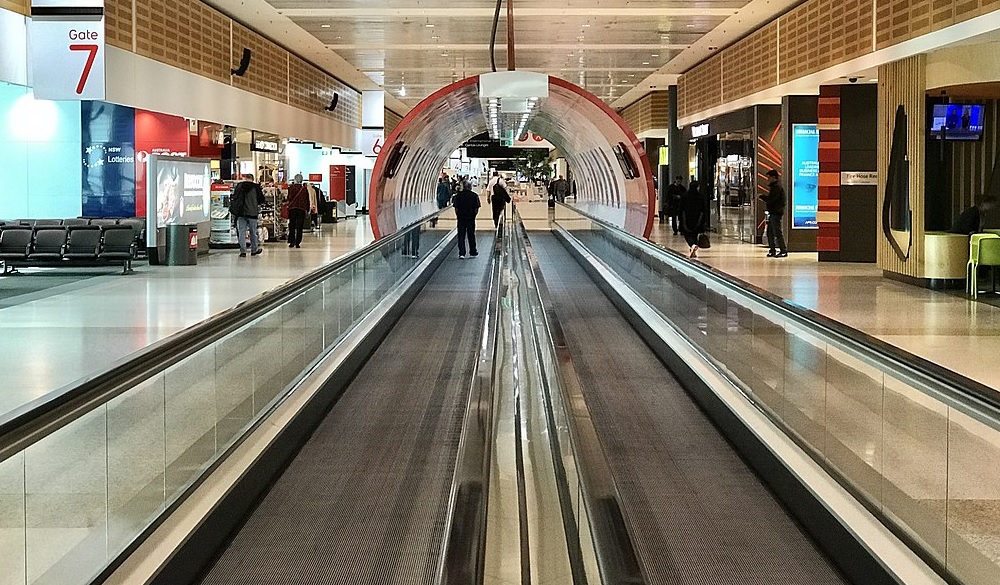6.5 million on the move: across the world, migration is surging

Global migration flows have risen to record levels since the pandemic, driven by economic opportunity and conflict, and are facing a widespread policy backlash.
A record 6.5 million people made new homes in advanced nations last year, according to the newly released Migration Outlook of the Organisation for Economic Cooperation and Development (OECD). Migration flows into advanced countries last year were 28 percent higher than in 2019, before the Covid-19 pandemic.
This does not include the exodus from Ukraine, which about 300,000 people left last year, taking the number of Ukrainians who have fled the war to 5 million.
A further 2.5 million people moved to advanced nations temporarily last year, including students, working holiday-makers and contract labour.
Rising migration is a defining feature of globalisation. The number of people living in a different nation from where they were born has risen from 153 million in 1990, representing 2.9 percent of the global population, to 281 million in 2020, or 3.6 percent of the global population.
In advanced nations, the population share of immigrants has risen from 9 percent to 11 percent over the past decade. Among OECD members, Australia has one of the highest rates of foreign-born residents, at 29 percent. It is surpassed by only Switzerland and Luxembourg.
The incoming Trump administration’s plan for mass deportation of undocumented migrants is part of a global rethink of migration policy, particularly affecting those seeking asylum.
Countries toughening their asylum policies include Germany, Netherlands, Sweden, Finland, Italy and Britain, while the United States has already strengthened border controls under the Biden presidency.
Official humanitarian migration rose 20 percent to 650,000 last year, however this was only a fraction of demand. Applications from asylum seekers already in a host country rose 30 percent to 2.7 million in 2023, having jumped by more than 90 percent in 2022.
The surge in demand for asylum was greatest in the US, where there were 1.2 million new applications. The biggest source countries were Venezuela, Colombia and Cuba, while applications from Haiti and Nicaragua also soared.
Germany is the second largest destination for asylum seekers. Its 329,000 new applications last year represented a 51 percent jump. Asylum applications in Australia leapt 69 percent last year to 32,550. Iran, Vietnam and India were the biggest source countries.
Several nations have also sought to cap temporary labour migration. Canada is aiming to reduce the population share of temporary migrants from 6.25 percent to 5 percent by 2027. Britain is limiting the ability of temporary workers to bring dependents and has raised the required minimum salary by almost 50 percent. New Zealand has tightened its rules on low-income temporary workers, including by imposing a new English language test.
Australia, Canada and Britain are all implementing policies to slow the flow of international students, aiming to ease the pressure on infrastructure, particularly housing. The number of tertiary students receiving residency permits in Australia last year, 235,000, was 50 percent higher than in 2019, before the pandemic.
Globally, new international student numbers reached 2.1 million last year, which was a third higher than in 2019.
India is the biggest source of migrants globally: 560,000 Indians moved to an OECD country in 2022, an annual increase of more than 30 percent. There were 300,000 Chinese migrants to OECD countries, while migration from Russia more than doubled in 2022, rising to 270,000. Turkey, Israel and Germany were the favoured destinations for Russian migrants.
While governments in the major migration destination countries are responding to the pressure on infrastructure and public services, the OECD says migrants generally have good employment outcomes. It suggests that cutting the number of migrants to relieve the pressure on housing would also reduce the number of skilled construction workers to add to housing supply.
There is very little difference in overall rates of employment across the OECD: 71.2 percent of working-age migrants are employed, compared with 72.0 percent of the native born. In both Australia and the US, the unemployment rate among migrants is lower than for the native born. The ability to tap global labour markets to cover areas of skill shortage is the central economic argument for higher migration flows.
The UN-affiliated International Organisation for Migration reports that advanced nations are home to 80 percent of the world’s 281 million migrants. While that is consistent with the idea of migrants seeking a better life, its annual migration report shows that advanced countries (including Germany, Italy and Britain) and the more affluent emerging nations (such as China, Mexico and Philippines) are 16 of the top 20 origin countries for the world’s migrants. None of the poorest nations is in the top 20.
The vast majority of people displaced by war and poverty do not have a chance to migrate. The International Organisation for Migration estimates there were 35 million refugees in 2022 from conflicts including Syria, Yemen, Central African Republic, Democratic Republic of Congo, Sudan, Ethiopia and Myanmar. A further 71 million are displaced internally as a result of conflict and violence.

